Delhi NCR has been struggling with hazardous levels of air pollution for several years, especially during the winter months when the Air Quality Index (AQI) often reaches the “severe” and “emergency” categories. Despite multiple interventions, the region experiences recurring pollution spikes due to a combination of environmental, industrial, agricultural, and human-made factors. Understanding these underlying causes is the first step toward recognizing long-term and short-term solutions. In this comprehensive article, we explore the top reasons for poor air quality in Delhi NCR and outline possible safety tips and solutions that every resident should follow to protect their health and contribute to cleaner air.
Top Reasons for Poor Air Quality in Delhi NCR
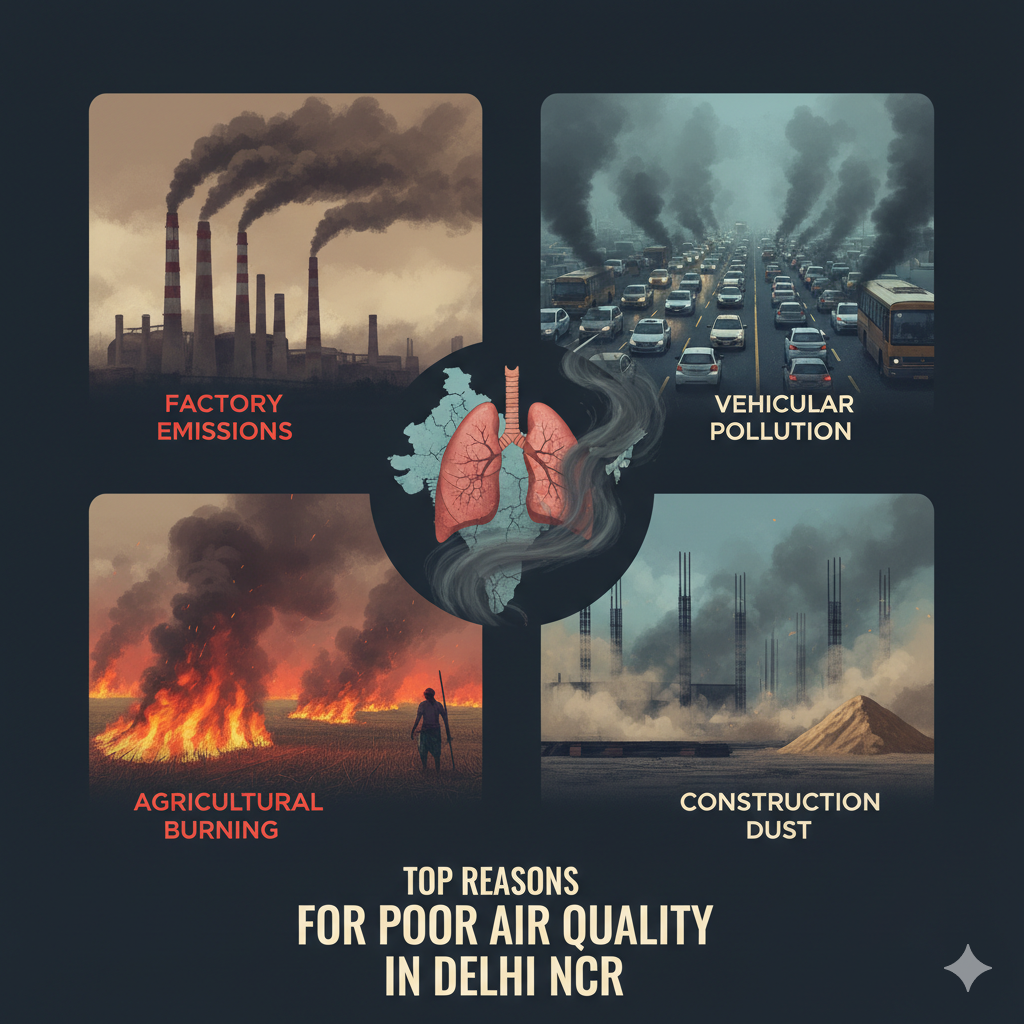
Poor air quality in Delhi NCR is the outcome of multiple interconnected factors. These include seasonal influences, industrial emissions, population density, vehicular pollution, crop residue burning, construction activities, geographic disadvantages, and more. Let’s take a detailed look at each one.
1. Vehicular Emissions as a Major Reason for Poor Air Quality in Delhi NCR
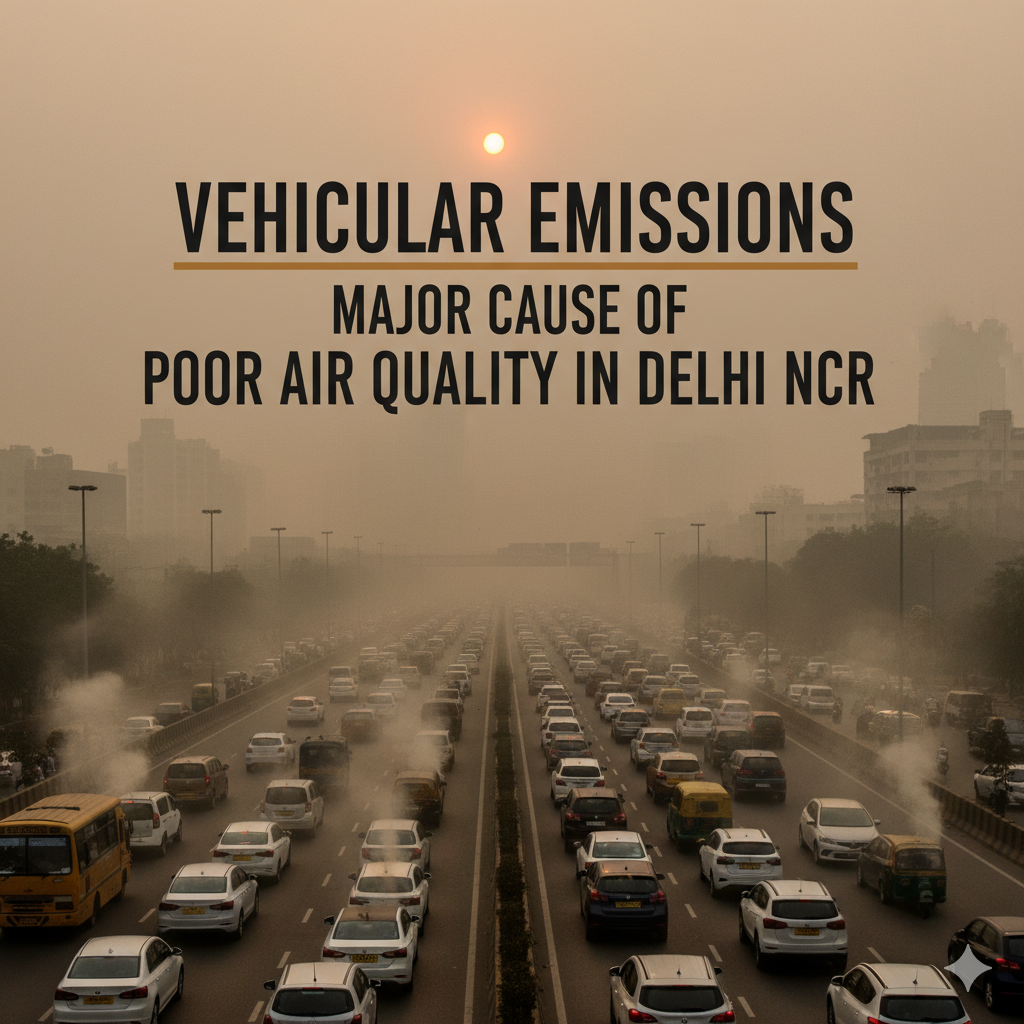
With millions of vehicles operating daily, Delhi NCR suffers from massive traffic congestion. Vehicular emissions are one of the leading contributors to PM2.5 and PM10 levels.
How Vehicular Pollution Impacts Air Quality:
- High emission load from outdated vehicles
- Incomplete fuel combustion in two-wheelers and three-wheelers
- Massive daily traffic jams
- Diesel trucks entering the city at night
- High usage of private vehicles due to limited last-mile connectivity
Nitrogen oxides, carbon monoxide, and particulate matter released by vehicles settle in the atmosphere and reduce visibility, leading to smog formation.
2. Stubble Burning: A Seasonal Cause for Poor Air Quality in Delhi NCR

Every year, during October and November, farmers in neighboring states burn crop residue to clear fields quickly for the next sowing cycle. The smoke travels to Delhi NCR due to wind patterns.
Why Stubble Burning Worsens Pollution:
- Massive release of PM2.5
- Presence of harmful gases like methane and carbon monoxide
- Favorable wind conditions that push smoke toward Delhi
- Lower wind speed trapping pollutants in the NCR basin
During this period, air quality worsens dramatically and reaches dangerous levels.
3. Construction Dust and Infrastructure Projects Adding to Poor Air Quality in Delhi NCR
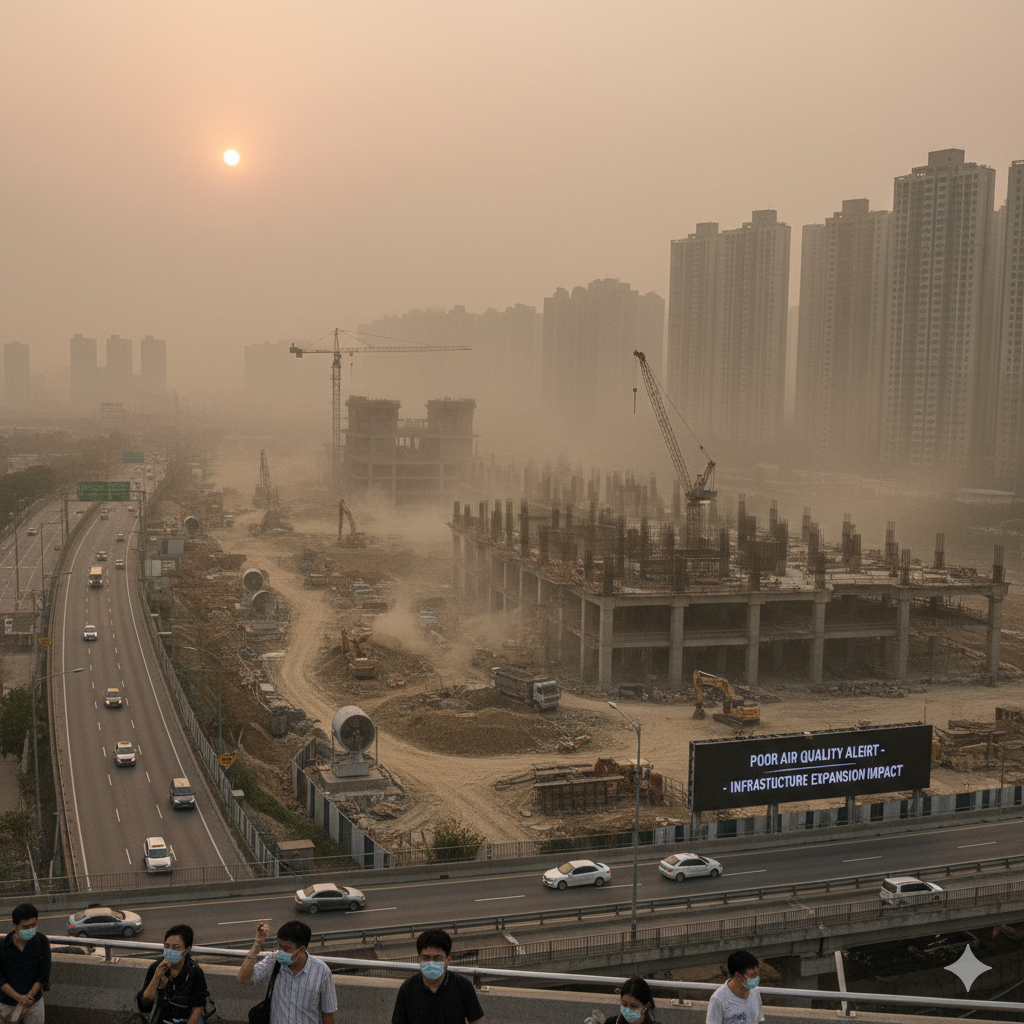
Delhi NCR is one of the fastest-growing metropolitan regions with continuous large-scale construction projects—roads, bridges, buildings, flyovers, and metro expansions.
Impact of Construction Activities:
- Dust and debris increase PM10 levels
- Demolition waste remains uncovered
- Sand, gravel, and cement particles become airborne
- Heavy machinery emissions contribute additional pollutants
Even small construction projects in residential areas add significantly to ambient pollution.
4. Industrial Emissions as a Critical Factor Behind Poor Air Quality in Delhi NCR
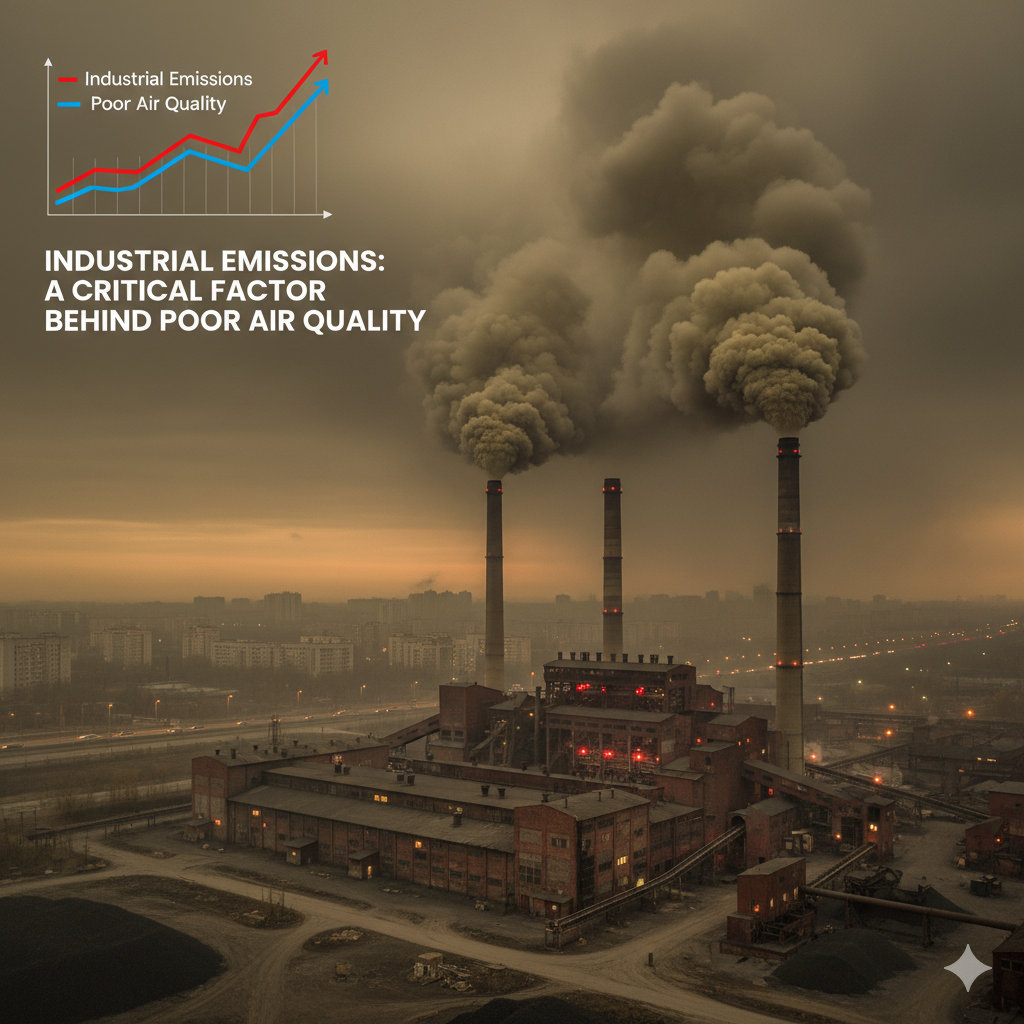
Industries located in and around Delhi NCR—especially those using fossil fuels—release large quantities of toxic gases and particulate matter.
Industrial Contributors:
- Brick kilns using outdated technology
- Factories burning coal and diesel
- Unauthorized industrial units
- Chemical manufacturing units releasing volatile organic compounds (VOCs)
These emissions enter the air and spread over long distances, adding to the constant pollution load.
5. Population Density and Overcrowding Increasing Poor Air Quality in Delhi NCR

Delhi is one of the most densely populated urban regions in the world. Overpopulation increases the demand for transportation, electricity, housing, and food—all of which have environmental consequences.
Effects of Overpopulation:
- Increased energy consumption
- Higher waste generation
- More vehicles and fuel consumption
- Overdependence on diesel generators during power cuts
All these activities release pollutants that settle in the atmosphere.
6. Geographic and Climatic Factors Causing Poor Air Quality in Delhi NCR
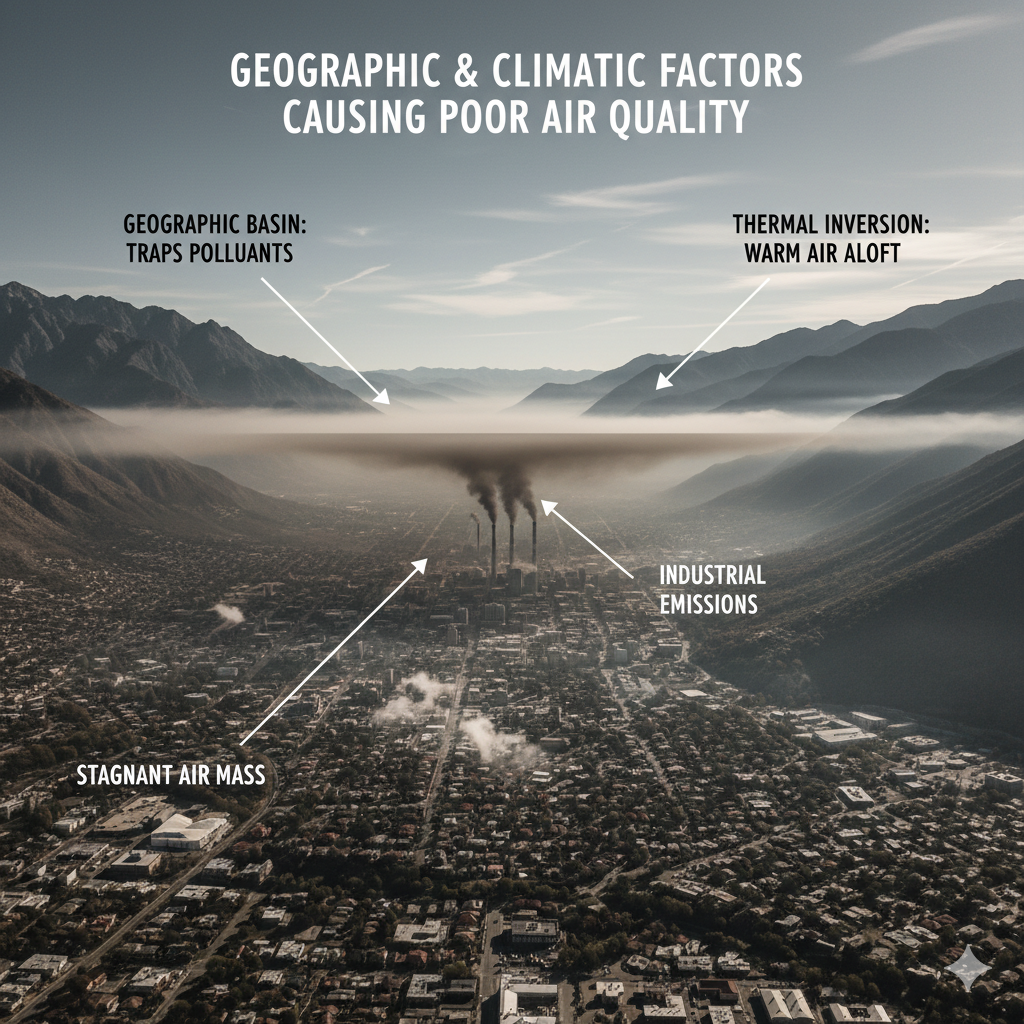
Delhi NCR is landlocked and surrounded by industrial and agricultural belts. Additionally, the region’s winter weather worsens the pollution.
Geographic & Climatic Challenges:
- The city lies in an Indo-Gangetic plain that traps pollutants
- Low wind speed prevents dispersion
- Temperature inversion during winter keeps pollutants at lower levels
- Fog combines with smoke, forming thick smog
These natural factors amplify the existing pollution load.
7. Waste Burning and Landfill Fires Contributing to Poor Air Quality in Delhi NCR

Improper waste management leads to open burning of garbage and frequent landfill fires. These fires release toxic fumes and particulate matter.
Pollutants Released from Burning Waste:
- Sulfur dioxide
- Carbon monoxide
- Methane
- Heavy metals from plastic burning
- PM2.5 and PM10
Landfill fires sometimes burn for days, worsening breathing problems among residents.
8. Diesel Generators as a Significant Source of Poor Air Quality in Delhi NCR
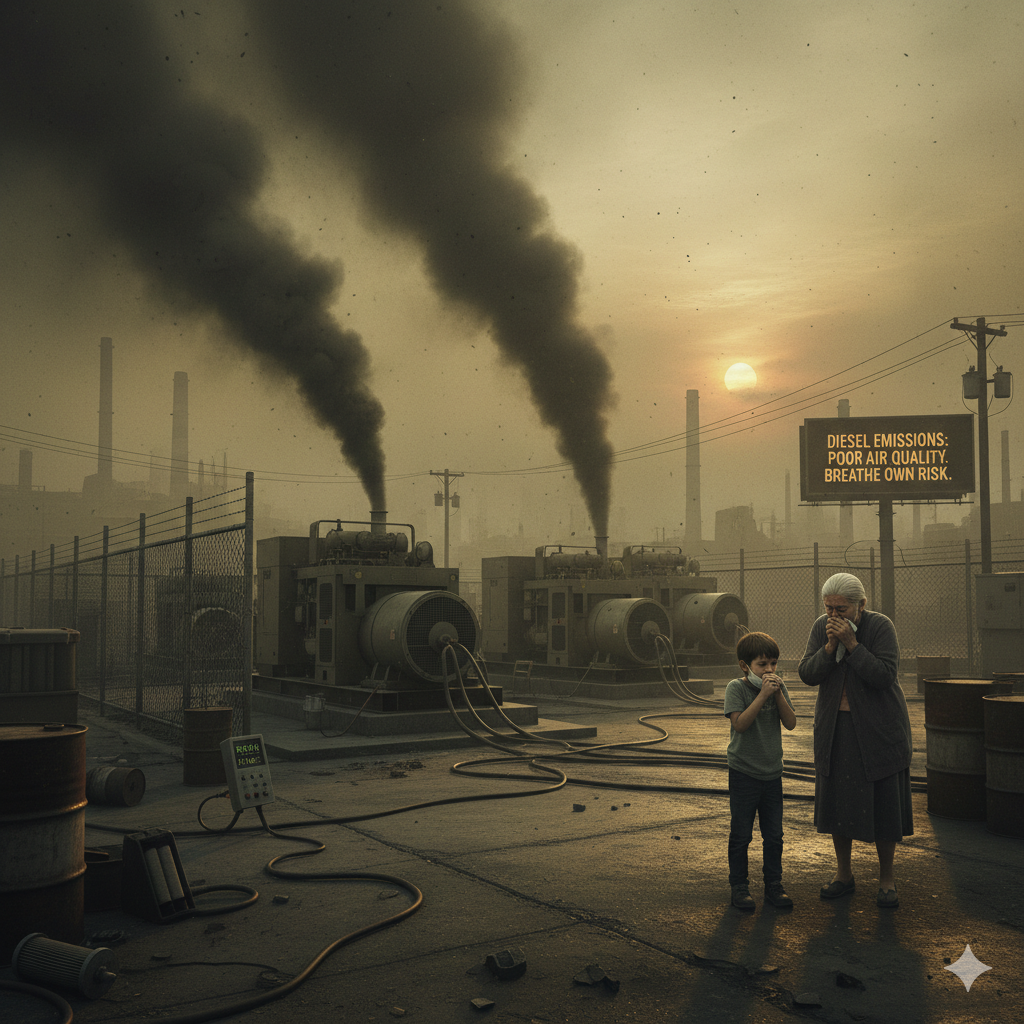
During peak electricity shortage or power cuts, residential societies, hospitals, shops, and offices use diesel generators.
Why Diesel Generators Are Harmful:
- Emit unburned hydrocarbons
- Produce sulfur dioxide
- Release high levels of PM2.5
- Operate for long hours in winter months
Their cumulative impact is enormous, especially in densely populated areas.
9. Industrial Transport and Heavy Vehicles Increasing Poor Air Quality in Delhi NCR

Heavy trucks and delivery vehicles frequently travel through the NCR region.
Polluting Effects of Heavy Vehicles:
- Use of low-grade fuel
- Late-night entry into the city
- Poor maintenance leads to higher emissions
- High soot release from diesel engines
These emissions stay trapped in the atmosphere overnight, worsening morning air quality.
10. Household Emissions Adding to Poor Air Quality in Delhi NCR
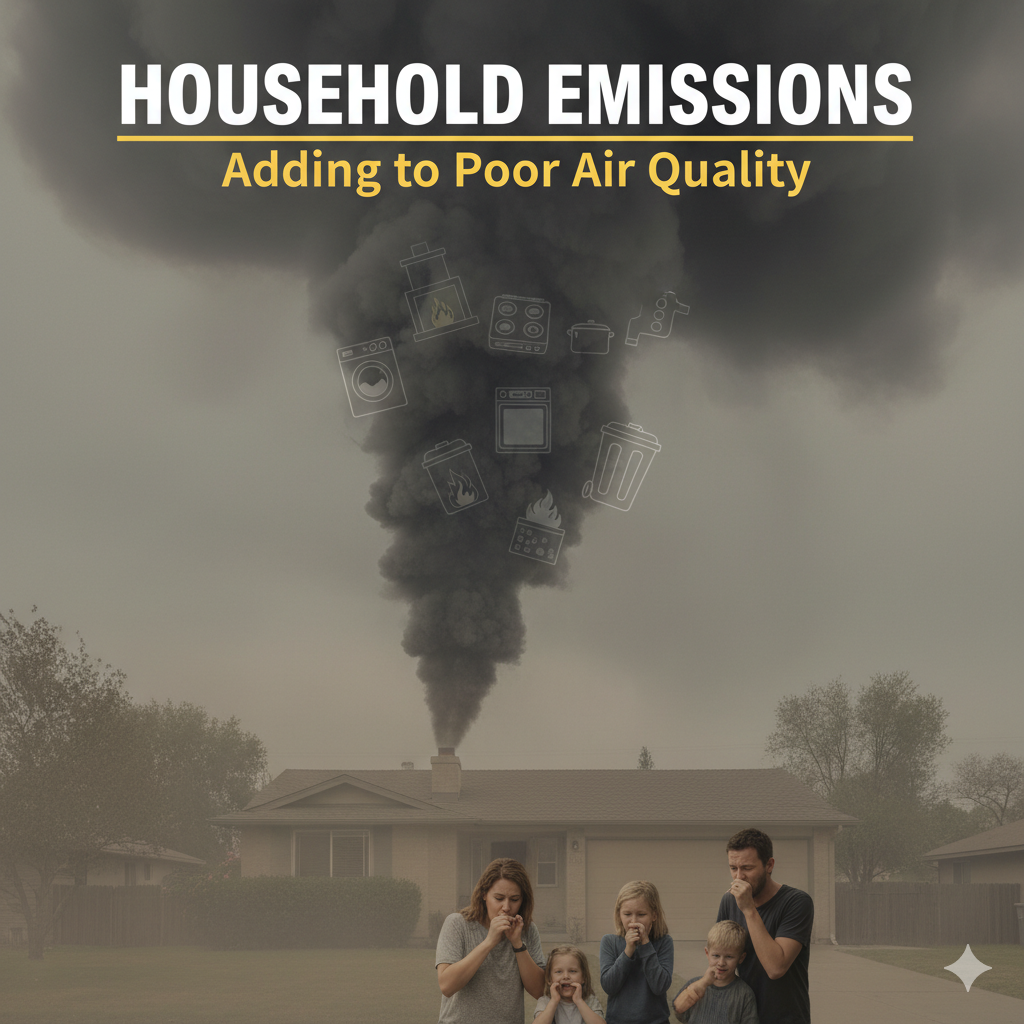
Indoor sources also contribute to external pollution.
Household Activities That Increase Pollution:
- Burning wood or biomass for cooking (in some rural belts)
- Use of incense sticks and mosquito coils
- Chemical cleaners releasing VOCs
- Use of candles and firecrackers during festivals
These pollutants gradually mix with outdoor air.
The Health Impact of Poor Air Quality in Delhi NCR

The rise in pollution levels severely affects the health of residents, especially children, elderly individuals, and people with pre-existing conditions.
Common Health Issues:
-
- Asthma attacks
- Chronic bronchitis
- Increased lung infections
- Eye irritation
- Fatigue and headaches
- Reduced lung capacity in children
- Higher hospitalization rates during winter
Prolonged exposure to PM2.5 can even lead to long-term respiratory and cardiovascular diseases.
Possible Safety Tips & Solutions for Poor Air Quality in Delhi NCR

The situation requires a combination of personal preventive measures and collective long-term solutions. Here are effective lifestyle changes and safety strategies.
1. Using Air Purifiers as a Safety Solution for Poor Air Quality in Delhi NCR
High-quality air purifiers can significantly reduce PM2.5 and PM10 levels indoors.
Tips:
- Choose HEPA filter purifiers
- Clean or replace filters regularly
- Keep doors and windows closed during high-AQI days
Air purifiers help maintain a healthy indoor environment.
2. Wearing Protective Masks as a Safety Tip in Poor Air Quality in Delhi NCR
Masks are essential when stepping outdoors during pollution peaks.
Recommended Masks:
- N95 masks
- N99 masks
- Activated carbon masks
These protect against fine particulate matter.
3. Avoiding Outdoor Exercise During Peak Pollution Levels in Delhi NCR
Morning and evening hours often have the worst AQI levels.
Advice:
- Exercise indoors
- Use treadmills or indoor cycling
- Practice yoga at home
This helps avoid excessive inhalation of pollutants.
4. Increasing Indoor Plants as a Natural Solution for Poor Air Quality in Delhi NCR
Certain plants help purify indoor air.
Best Air-Purifying Plants:
- Areca palm
- Snake plant
- Peace lily
- Spider plant
These plants absorb toxins and improve indoor oxygen levels.
5. Using Public Transport to Reduce Poor Air Quality in Delhi NCR
Reducing the number of private vehicles on the road can significantly control pollution.
Sustainable Options:
- Metro
- Electric buses
- Shared cabs
- Carpooling
Collective efforts lead to better outcomes.
6. Avoiding Firecrackers to Control Poor Air Quality in Delhi NCR
Firecrackers release toxic fumes and dense smoke, increasing pollution levels dramatically.
Alternative Celebrations:
- Eco-friendly decor
- Laser light shows
- Community gatherings without fireworks
This helps reduce seasonal pollution.
7. Proper Waste Disposal to Reduce Poor Air Quality in Delhi NCR
Discouraging open burning is crucial.
Waste Management Practices:
- Segregate waste
- Compost biodegradable materials
- Recycle dry waste
- Avoid burning leaves or garbage
Proper waste management prevents smoke and toxic emissions.
8. Promoting Electric Vehicles for Long-Term Solutions in Delhi NCR
EVs reduce pollutant emissions significantly.
Benefits:
- Zero tailpipe emissions
- Reduced noise pollution
- Lower carbon footprint
This transition is essential for cleaner air.
9. Encouraging Renewable Energy to Reduce Poor Air Quality in Delhi NCR
Switching from fossil fuels to renewable energy sources is vital.
Options:
- Solar power
- Wind energy
- Biogas
Renewable energy reduces dependence on diesel generators and coal.
10. Government Policies and Citizen Participation for Better Air Quality in Delhi NCR
Both authorities and residents must work together.
Essential Measures:
- Enforcing construction guidelines
- Monitoring industrial emissions
- Encouraging green mobility
- Conducting awareness programs
- Supporting pollution-control campaigns
Community involvement strengthens long-term effectiveness.
Long-Term Environmental Solutions for Poor Air Quality in Delhi NCR

While personal safety tips offer temporary relief, large-scale solutions are necessary for long-lasting change.
1. Large-Scale Afforestation Programs
Planting more trees improves oxygen levels and reduces carbon dioxide.
2. Upgrading Public Transport Infrastructure
More electric buses, metro expansions, and seamless last-mile connectivity are essential.
3. Introducing Clean Industrial Technology
Industries must adopt cleaner fuel and modern pollution-control mechanisms.
4. Improving Agricultural Practices
Alternatives to stubble burning:
- Mechanized residue management
- Decomposers
- Crop diversification
- Government subsidy programs
5. Stricter Urban Planning Regulations
Urban planning must prioritize green zones, efficient waste-disposal systems, and designated industrial areas.
Possible Indoor Safety Tips During Poor Air Quality in Delhi NCR
Residents should maintain safe indoor air quality during peak pollution seasons.




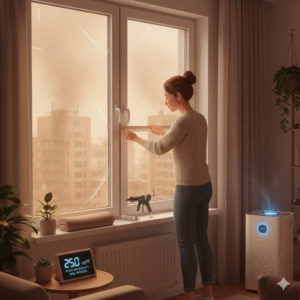

Tips to Follow:
- Keep windows closed during high AQI days
- Use wet cloth for cleaning instead of dry dusting
- Avoid incense and candles
- Check AQI before stepping outdoors
- Stay hydrated to flush out toxins
- Include foods rich in Vitamin C and antioxidants
Role of Individuals in Combating Poor Air Quality in Delhi NCR
Small daily habits can make a significant difference.
What Residents Can Do:
- Carpool instead of driving alone
- Avoid unnecessary idling of vehicles
- Maintain vehicle engines
- Limit use of generators
- Reduce use of plastic
- Participate in community clean-air initiatives
Addressing Top Reasons for Poor Air Quality in Delhi NCR with Practical Safety Tips & Solutions
Poor air quality in Delhi NCR is not caused by one single factor; it is the outcome of multiple environmental, industrial, and human-driven reasons. Vehicular emissions, stubble burning, construction dust, industrial activities, population pressure, and geographic disadvantages all collectively worsen the region’s air. While long-term government policies and technological changes are essential, individuals can also take preventive steps to protect their health and reduce pollution.
By understanding the top reasons for poor air quality in Delhi NCR and applying the safety tips & solutions mentioned above, residents can contribute to a cleaner and healthier environment. Collective action, sustainable habits, and awareness are the key to improving the region’s air quality for future generations.

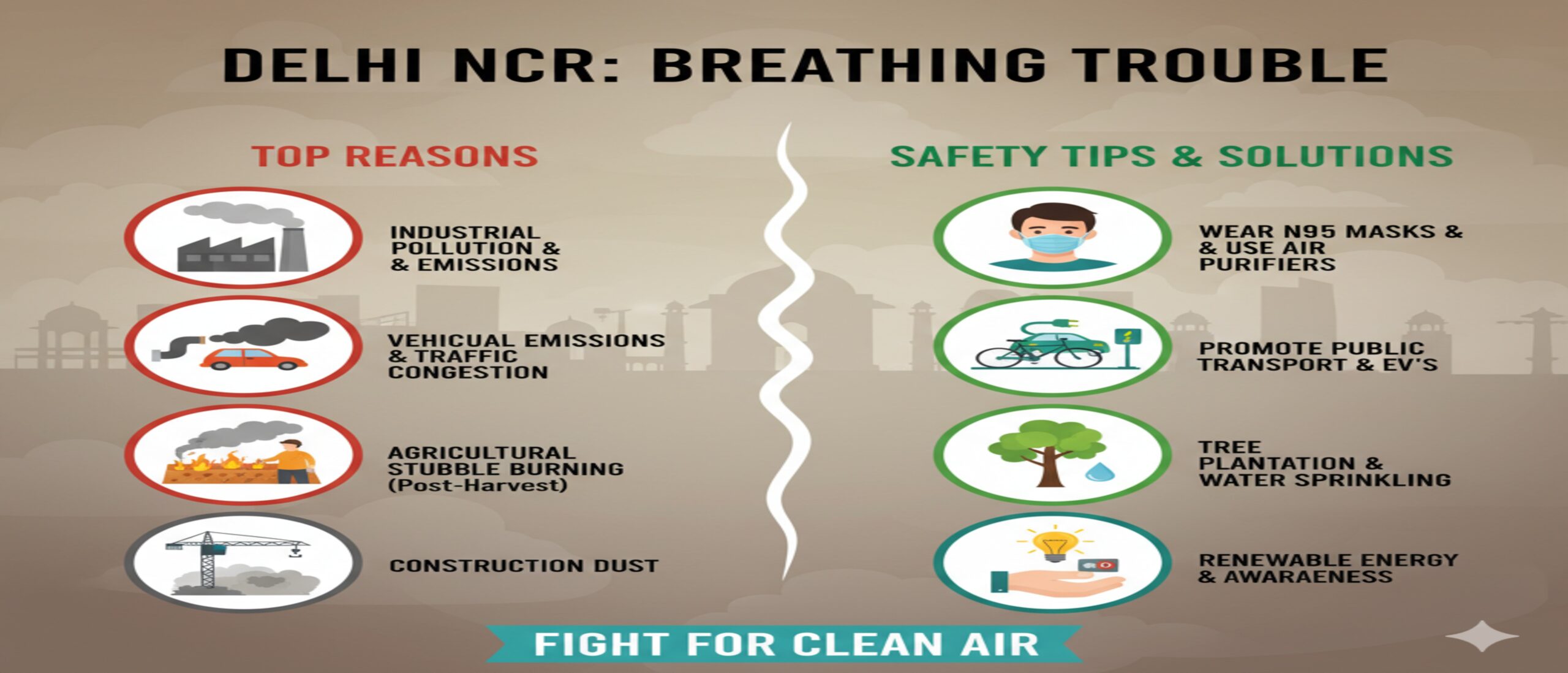
Leave a Reply